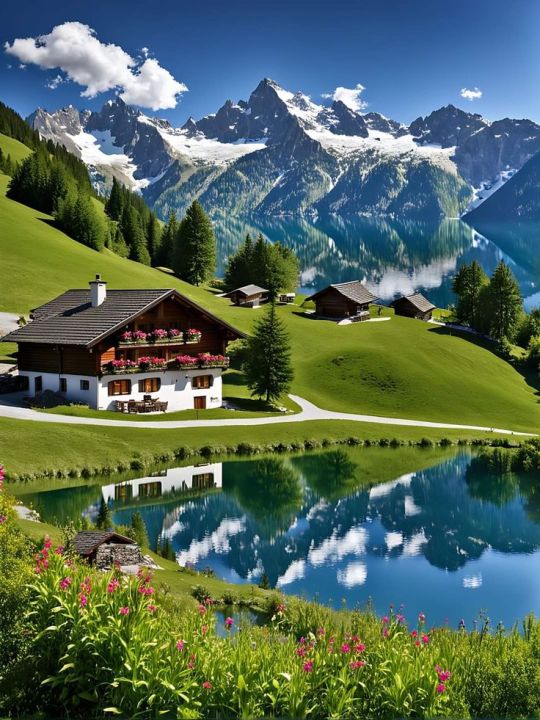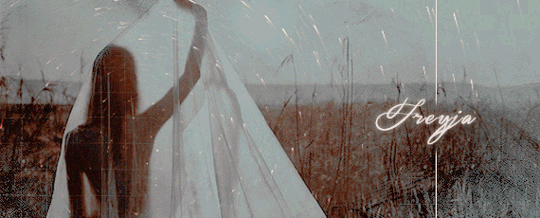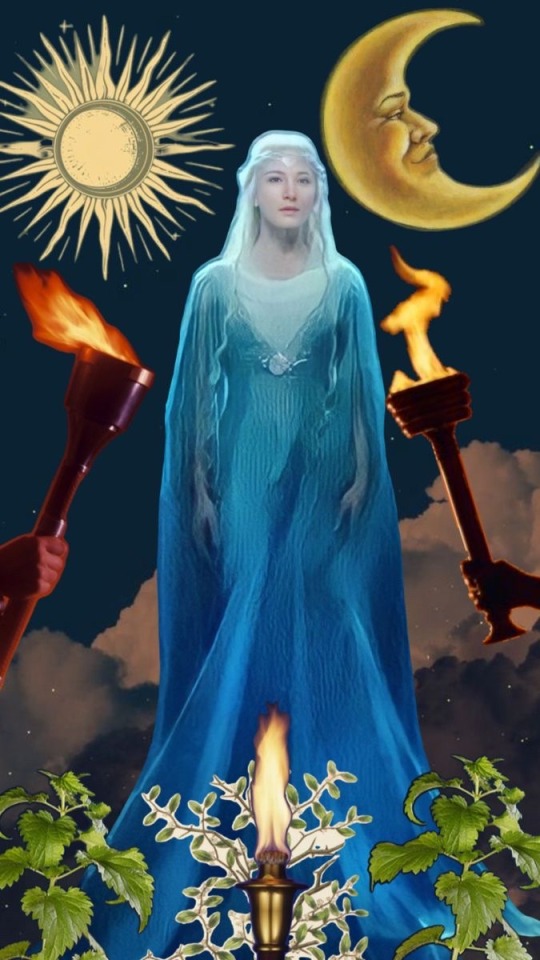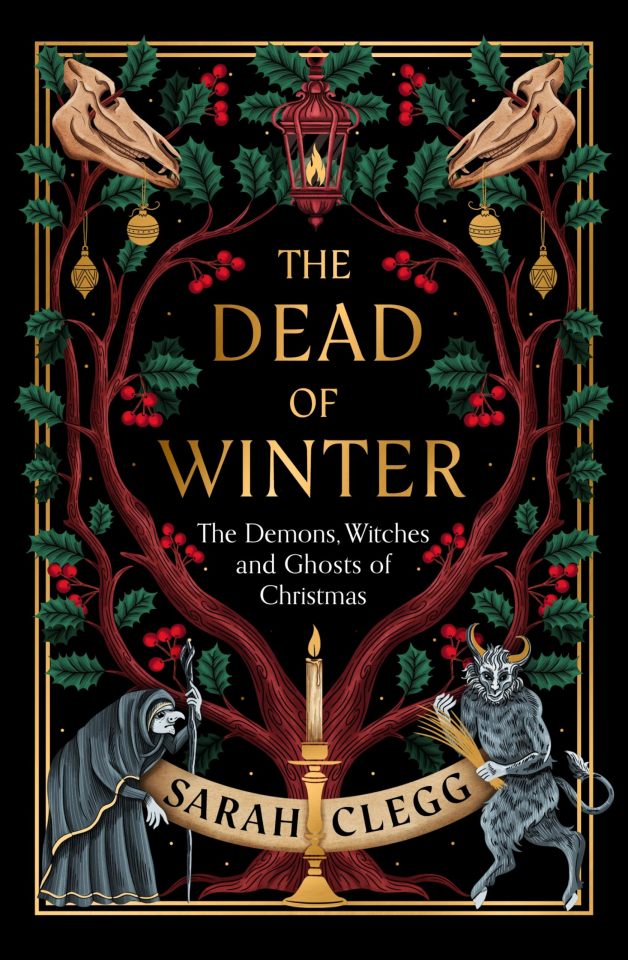#European Festivals Association
Explore tagged Tumblr posts
Text
9th and 12th Houses - How Far is Foreign?

An insight, that adds to depth of understanding of Astrology through diving into Vedic resources is the change in perception between the 12th and the 9th house.
In popular Astrology circles, both of these houses are commonly associated with foreign lands. However, as you explore the meaning of these houses more, you begin to understand them deeper in polarity with their opposite.
The actual house of foreign, far away travel (or relocation, depending on the chart) is the 9th house. That is because the 9th house is the opposite of the 3rd house.
Say you are European, and you lived your whole life in Europe, and you travelled around different European countries to explore the continent. This is the 3rd house. It is the expansion beyond your local home country into exploring its nearest cultural environment, and at the end of such a pilgrimage, you end up with a personal understanding of your individual, cultural identity, which moves you to its emotional interpretation in the 4th house.
But then lets say you travel or move from Europe to Asia, either of the American continents, Australia…take your pick. This is the activation of the 9th house. Because you are no longer exploring just the back yard of a culture with a certain degree of similarity, you are entering a completely new physical world.
This is why houses 9, 10 and 11, and 12th to an extent, are found in charts of famous people. You need to be able to participate in an energy, an idea, that is going to spread into foreign lands to truly be famous. This applies even if we’re talking about online success, which is the way people get recognition nowadays. Otherwise, you are at best a local singer on your continent or your country’s music festival. There is nothing wrong with that of course, as many people love to contribute to their community and they’re happy doing so, but it’s still an accurate observation. You need to be able to go far away, not strictly physically but energetically, to touch a variety of people from many cultures.
You might wonder, how does the 12th house fit into this? Clearly, it’s part of the whole 9th, 10th, 11th and 12th house group, so it should also rule foreign lands. But the 12th house is actually more than that. The 12th house rules a fantastical, foreign idea, that might not necessarily be grounded in the immediate physical, but is nevertheless energetically real and can be accessed from anywhere. It’s the idea of the collective emotional consciousness, that may not have the most quick and obvious material manifestation but is nevertheless a very real thing existing within this Universe.
Up until the 11th house, through 9th and 10th, we are dealing with more or less tangible ideas regarding foreign lands. Let’s say in the 9th house you relocated to a completely foreign culture, in the 10th house you found a way to tangibly join the most prominent physical environment of the world through that culture, in the 11th house you met some of the most prominent, affluent people in the world. I don’t have any 11th house planets, but to give you an idea of how it works, my husband has Venus conjunct Mars in the 11th house, we live in the Las Vegas area, and he plays sports and is casually friendly with some of the wealthiest people in the world, who own successful businesses, own several properties across the world, and spend a lot of their time either making a lot of money or travelling the world, or both. We are not one of those people, but it should give you an idea of what the 11th house is. It’s the creme de la creme of the physical world. I don’t personally interact much with these people, as they are my husband’s friends, not mine, and I don’t play sports with them, but I have a deep awareness of how advanced socially and financially this particular group is, having travelled to many poorer parts of the world. There are people in this world, starving, so in comparison to them, the 11th house society is the top 1% of 1%.
You might think, well, the 11th house is everything, so how can the 12th house be more? The 12th house is more because it sells something even the 11th house people can’t resist, it sells the ultimate fantasy.
In the 12th house we move on to people so wealthy, they barely even interact with others. We move to intangible concepts, physical areas and objects, that provoke people to spend obscene amounts of money simply due to some idea. The 12th house is not just real foreign travel like the 9th house, it is the embodiment of the realisation of all fantasies. That is why Venus is so happy in the 12th house, because it enjoys the ultimate idea of fantastical luxury.
The foreign area that we travel to in the 12th house is not this globe, it is deep inside us. By the time we realise all our fantasies in the 11th house we can feel tired, or even jaded. But in the 12th house we are stimulated to all of our secret, hidden desires being provoked and coming true. This can be done not only within our home, within our room, but completely within our minds. Those, who are successful in the 12th house are those, who made those fantasies concrete enough to realise them and live within them.
What if you could taste and smell the finest perfume created on this planet from purely natural oils? What if you could touch the finest fabrics, created in corners of the world you never even dreamed of? What if you could live this dream, every day, surrounded by an infinite kaleidoscope of the pinnacle of perfection achieved by our planet until this time? “What if?” is the exotic, “foreign”, “far away” dream of the 12th house, and a well realised 12th house is a dream come true.
To offer up an example, in the last few years, youtubers living in rural areas from all over the world have popped up on the internet, offering videos from their seemingly idyllic life. That is the definition of the 12th house fantasy, devoid of the actually reality of having to take the 9th house physical pilgrimage of travelling to rural China and enduring all the difficulties involved with facing the reality of such a location. It may seem idealised, yet the source material for filming is real, so while it may be distant from the viewers geographically, while it may cost the locals a lot of work, it is nevertheless part of an actual, existing reality.
This dream, that can seem excessive to a mundane mind, becomes even clearer in the context of the 12th house’s polarity, the 6th house. The 6th house is the tough battle of dealing with the ugliness and conflict of this world. That is the reality of this physical world for most of us, we get up every day and deal with conflicts, that we have in front of us. It is exhausting, and so the 12th house is everything that heals and soothes the pain of any conflict that ravaged us in the 6th house. It’s the world offering no resistance, it’s all boundaries being breached. After all, in our dreams, or fantasies, we want everything to be perfect and smooth.
Ironically enough, the karaka of the 12th house is Saturn. As someone with significant 12th house influence, it is pretty clear to me why. In order to have only the finest dream come true, to really live in a beautiful fantasy, one actually needs to do a lot of research, be picky, critical and have background expertise and know-how. Otherwise, even as just a consumer, you would be easily fooled, hoodwinked into a fake product, or end up overpaying on something, that is not worth the money you invest into it. Scrutiny of Saturn is necessary for our fantasies to be smooth. It is not something, that is given to us that easily. Saturn also rules isolation, and if the 9th house is foreign, the 12th house is the pinnacle of remote. The 9th house is what is foreign and exciting to us, mentally and physically, but the 12th house represents the most remote corners of both the physical world, and our minds.
This is why the 12th house is the furthest away from the 1st house, our basic, natural, physical life. Because the furthest thing on this planet is not just a foreign continent, it’s a journey inside our minds and emotions, the ability to blend discernment and internal surrender to divine perfection, that leads to manifestation. It is the full depth of untapped potential on the very bottom of our subconscious, a research and response to all collective energetic resources available on the planet, a gold mine waiting to be explored, exploited, and enjoyed. And it is tapping into this gold mine, that has the power to tempt, seduce, and attract people from all around the world into directing their energy towards us, even if we’re physically just sitting in our room, far away from them.
285 notes
·
View notes
Text
Buck Moon - July 20-21, 2024

Put on your flower crowns and your walking shoes - it’s time for the Buck Moon!
Buck Moon 🦌
The Buck Moon is the name given to the full moon in the month of July and is called this because at this time of year, the rack of antlers previously shed by male deer are beginning to regrow and harden in preparation for the fall rutting season.
Other North American Indigenous names for this moon include Salmon Moon (Tlingit), Berry Moon (Anishinaabe), Month of the Ripe Corn Moon (Cherokee), and Raspberry Moon (Algonquin, Ojibwe). The West Abenaki also call this the Thunder Moon in reference to the often-stormy summer weather. (This one is my personal favorite and the name appears in lunar calendars just as often as the Buck Moon.)
European names for the July moon include Hay Moon and Wort Moon, and it should be noted that the name Stag Moon does appear in some European sources as well.
This year's Buck Moon will be at peak illumination at 6:17am EST on July 21st, so the moon will appear to be full on both the 20th and 21st. Also, it's a weekend, so plan your festivities accordingly!
What Does It Mean For Witches? 🦌
The July full moon continues June’s template of planning for the future, this time with a focus on your passions and ambitions. Reflect on what you’ve accomplished so far this year and plan your next step.
Dream big and plan big, but don’t give in to reckless urgency. Summer (and capitalist grind culture) gives us the urge to Go Go Go. Despite all this, it’s important to take time to rest and recharge, lest we find ourselves burning out and losing our motivation.
What Witchy Things Can We Do? 🦌
Celebrate your victories and revel in the abundance of the summer season. If you’re inclined to do so, take a page from the deer and do a bit of prancing around a bonfire or your favorite flower arbor with some festive flowery headgear.
Go exploring! Find a local park or garden and take a stroll among the greenery, or use TV and the internet to explore and learn about faraway places. This is another opportune time to go and check out pick-your-own farms and farmers markets as well. Sharpen your foraging and plant identification skills while you’re out and about!
If you’re tending a garden, harvest some herbs and investigate what you can make with them. Whether it’s seasoning for meals, homemade botanical products, or just helpful spell ingredients, many herbs and flowers have a plethora of uses. As an exercise, select three plants growing in your yard or garden, research their magical correspondences and botanical properties, and try to think of as many ways as possible to use each one for witchcraft and for practical purposes. For extra credit, pick something native to your area that doesn't appear in the western magical canon and use its' physical, folkloric, and historical associations to create something new!
(Safety Note: Always clean and prepare home-harvested herbs properly before using them for kitchen, bath, or medical preparations. Always be sure to properly identify any wildcrafted or foraged plants. Always consult a doctor before trying an herbal treatment and take all allergies, medications, and pre-existing conditions into account. Please also note that while herbal treatments can be helpful, it can have negative interactions and side effects just like any other medication, and it is not meant to be a replacement for modern medical care.)
Apart from the usual full-moon festivities, I’ve always found this is an excellent time for weather-witching. Summer weather is notoriously fickle, but it is also highly malleable - one recalls that old American Southern epithet of, “If you don’t like the weather, wait five minutes.”
If you’re hoping to bring some rain to water your garden or break the back of a heat wave, this may be the time to do it. My personal favorite folk magic ritual for rain-calling involves going outside with a broom and a bucket of water, using the broom to scatter drops of water over your yard, and shouting up to the clouds, “SEE? IT’S NOT HARD!”
Make sure you take local weather patterns into account and try to draw on existing fronts and nearby precipitation to get the desired result. And keep in mind that with weather magic, less is more and one casting is enough. Asking for too much or asking too often can produce undesirable results. And if you manage to make it rain, be sure to collect some for moon water!
If you’re interested in weather-witching, I highly recommend checking out this masterpost by @stormbornwitch for a number of excellent articles and suggestions.
Happy Buck Moon, witches! 🌕🦌
Sources and Further Reading:
Bree’s Lunar Calendar Series
Bree’s Secular Celebrations Series
Witchcraft Exercise - Creating Correspondences
Buck Moon: Full Moon in July 2024, The Old Farmer's Almanac.
Buck Moon Bonanza: Embrace July’s Massive Energy!, The Peculiar Brunette.
Everyday Moon Magic: Spells & Rituals for Abundant Living, Dorothy Morrison.
(If you’re enjoying my content, please feel free to drop a little something in the tip jar or check out my published works on Amazon or in the Willow Wings Witch Shop. 😊)
#witchblr#witch community#witchcraft#full moon#moon magic#pagan#buck moon#thunder moon#lunar magic#lunar calendar
211 notes
·
View notes
Text

Back to Sailor Moon for the floriography series! First up is Saturn! 🪐
The flower I chose for Saturn is the white chrysanthemum. White chrysanthemum flowers are commonly used in funerals in East Asian and some European cultures, and is associated with death, bereavement, and condolence. However in Chinese culture it is also associated with the traditional Double Nine Festival, a festival that celebrates one’s ancestors and during which people pray for health and a good harvest. In that context, chrysanthemums, and wines made from the flower, are associated with health and longevity. The two paradoxical meanings is a nice fit for Saturn, the herald of death but also of rebirth.
169 notes
·
View notes
Text
Travel the World of Imagination: Journeys Beyond Border
Kieth Denmark M. Retes | BSIT1A OVERVIEW:
Switzerland originates from the Old Swiss Confederacy established in the Late Middle Ages, following a series of military successes against Austria and Burgundy; the Federal Charter of 1291 is considered the country's founding document. Swiss independence from the Holy Roman Empire was formally recognized in the Peace of Westphalia in 1648. Switzerland has maintained a policy of armed neutrality since the 16th century and has not fought an international war since 1815. It joined the United Nations only in 2002 but pursues an active foreign policy that includes frequent involvement in peace building.
Switzerland is the birthplace of the Red Cross and hosts the headquarters or offices of most major international institutions including the WTO, the WHO, the ILO, FIFA, the WEF, and the UN. It is a founding member of the European Free Trade Association (EFTA), but not part of the European Union (EU), the European Economic Area, or the eurozone; however, it participates in the European single market and the Schengen Area. Switzerland is a federal republic composed of 26 cantons, with federal authorities based in Bern. references: Switzerland - Wikipedia

Switzerland, a small yet influential country nestled in the heart of Europe, stands out in many ways. From its awe-inspiring landscapes to its unique political system, Switzerland offers a blend of natural beauty, cultural diversity, and global diplomacy that few other nations can match. Its distinct character is a product of centuries of neutrality, innovation, and a deep respect for its heritage, all of which contribute to the nation’s unparalleled reputation on the world stage.

One of the first things that captivates visitors to Switzerland is its breathtaking scenery. The country is dominated by the majestic Alps, with towering snow-capped peaks that attract adventurers and nature lovers from around the globe. Whether it’s skiing in world-class resorts like Zermatt and St. Moritz or hiking through verdant valleys and along crystal-clear lakes, Switzerland offers outdoor experiences that are hard to rival. Beyond the Alps, the country is dotted with picturesque towns, lush meadows, and sparkling lakes, such as Lake Geneva and Lake Lucerne, each offering their own unique charm. The country's commitment to environmental preservation further enhances the beauty of these landscapes, ensuring that they remain pristine for future generations.

Swiss culture is characterized by diversity, which is reflected in diverse traditional customs. A region may be in some ways culturally connected to the neighbouring country that shares its language, all rooted in western European culture. The linguistically isolated Romansh culture in Graubünden in eastern Switzerland constitutes an exception. It survives only in the upper valleys of the Rhine and the Inn and strives to maintain its rare linguistic tradition.
Switzerland is home to notable contributors to literature, art, architecture, music and sciences. In addition, the country attracted creatives during times of unrest or war. Some 1000 museums are found in the country.
Among the most important cultural performances held annually are the Paléo Festival, Lucerne Festival, the Montreux Jazz Festival, the Locarno International Film Festival and Art Basel.
Alpine symbolism played an essential role in shaping Swiss history and the Swiss national identity. Many alpine areas and ski resorts attract visitors for winter sports as well as hiking and mountain biking in summer. The quieter seasons are spring and autumn. A traditional pastoral culture predominates in many areas, and small farms are omnipresent in rural areas. Folk art is nurtured in organisations across the country. Switzerland most directly in appears in music, dance, poetry, wood carving, and embroidery. The alphorn, a trumpet-like musical instrument made of wood has joined yodeling and the accordion as epitomes of traditional Swiss music.
references: Switzerland - Wikipedia
64 notes
·
View notes
Text
🐈⬛ ྀི Goddess Worship: An Introduction of Freyja 🐈⬛ ྀི

Note: Day 17 of our October calendar! Today we have an introduction of deities I work with/worship. This post is to provide some information about the deities but also how I work with them personally. Everyone has their own methods with the Gods, and you should do whatever feels right with you while also respecting the bases of the religions.
─── ⋆⋅☆⋅⋆ ───── ⋆⋅☆⋅⋆ ───── ⋆⋅☆⋅⋆ ───── ⋆⋅☆⋅⋆
Historical Background:
Freyja (or Freya) is a major goddess in Norse mythology, belonging to the Vanir tribe of deities, which are associated with fertility, prosperity, and nature. (Vanir and Aesir are different deities in the Norse Mytho). She is the daughter of Njord, the sea god, and sister to Freyr (Twins), the god of fertility, peace, and prosperity. Her hall is known as Fólkvangr which welcome half of the warriors who died in battle. She is also the goddess of love, beauty, war, death, and magic (her magic is known as seidr associated with prophecy and shape-shifting. she could see into the future and use the power of runes). Freyja’s worship may predate Norse mythology, with roots in earlier Germanic or proto-Indo-European traditions second the archeologists studies.

Attributes and Symbols:
Cats: Freyja’s chariot is said to be drawn by two large cats, symbolizing fertility and domesticity. She has been long symbolized through cats and usually people who. worship her will use cats to connect with her Boars: She also rides the boar named Hildisvíni, a symbol of fertility, protection, and strength. Brísingamen: Her famous necklace, a symbol of fertility, sexuality, and beauty. The Brísingamen was often considered an object of great power and desire as in the mytho many creatures and gods have fought to have it. Falcon Cloak: This magical cloak allows Freyja to shapeshift into a bird, symbolizing freedom, the soul’s flight, and her connection to magic. Amber and Gold: Amber, known as "Freyja's tears," is associated with the goddess due to the myth where she weeps golden tears for her missing husband, Óðr.

Worship and Rituals:
Seidr (Magic): Freyja is a practitioner and teacher of seidr, a form of Norse magic involving divination, trance states, and influencing fate. Women (and men) who practiced seidr would invoke her for aid. this pratice is still used in the Nordic countries but it needs to be taught through initiation. One cannot learn to practice Seidr magic without initiation by another Seidr. One way of worshipping her is through the practice of Runes. Love and Fertility: As a fertility goddess, Freyja was worshipped by those seeking love, marriage, and fertility. Offerings of gold, honey, and flowers were made in her name. A lot of people would also use sexual intercourse as a way to give away their energy to the goddess in exchange of love and pregnancy. Battle and Death: Despite being a goddess of love, Freyja is also a goddess of war and death. Half of those who die in battle are said to go to her hall, Fólkvangr, while the other half go to Odin’s hall, Valhalla. One can worship her not only for love but also for strenght in battles. She is fierce when it comes to help protect those who pray her. Now in the modern times, her worship of battles have been adjusted with internal battles, challenges in life and even justice. Festivals: Freyja was likely honored during seasonal festivals like Dísablót (mostly done during winter seasons), where offerings were made to the dísir, female spirits or ancestors, who were linked to fertility and protection. It involves sacrifices (not animals but instead sacrificing something of you in return of something else) and ritual offerings to Freyja or the feminine ancestor spirits. Unfortunately there isn't many source of information about the norse mythology as Norse People didn't especially write it.

-> When worshipping Freyja, do not take her for granted. Her energy is pure and warm but she wishes for attention. Make a small altar for her, give offerings every friday (and of course offerings during spells were you invoke her energy or help). The important here to feel connected to the deity and respect her as a whole energy. Everyone has their own way of praticing, so do what feels right. But remember to do your own research. Get out of TikTok and READ! archeological revues and works are important.
-> Ideas for offerings: Wine, honey, bread, prayers, cat symbols (statues, whiskers, furr, ect), same with boar figures, jewelery, gold, coins, amber, red fruits, apples, incense, candles, anything else that feels right to you

BIBLIOGRAPHY:
"Freyja, Lady, Vanadis: An Introduction to the Goddess" by Patricia M. Lafayllve
"The Viking Way: Religion and War in Late Iron Age Scandinavia" by Neil Price
"Gods and Myths of Northern Europe" by H.R. Ellis Davidson LA MITOLOGÍA, Y. E. C. D. THE MYTHOLOGY AND CULT OF FREYJA AND HER IMPORTANCE TO VIKING AGE WOMEN. Bellows, Henry Adams (Trans.) (1923).
A Edda Poetica. American-Scandinavian Foundation
─── ⋆⋅☆⋅⋆ ───── ⋆⋅☆⋅⋆ ───── ⋆⋅☆⋅⋆ ───── ⋆⋅☆⋅⋆
#freya#freyja#norse gods#norse mythology#freyja worship#deity#deity work#deity worship#deities#paganism#gods#norse paganism#norse runes#norse pagan#norse
64 notes
·
View notes
Note
have you reviewed the Christmas paintbrush colour?
(This is the only Neopet review in the inbox right now, so send requests if you have them.)

Christmas is kind of a weird concept for a colour, mostly because of its name—after all, the existence of "Christmas" on Neopets implies that there's a Neo-Jesus that died for your sins. The actual Christmas equivalent of Christmas on Neopets is called the Day of Giving (taking place during the Month of Celebrating, i.e., December). Obviously "Day of Giving" is too much of a mouthful for a paintbrush colour, but they could've gone for something like "festive" or "holiday" instead. This would also accommodate other religions, as not all Christmas pets are Christmas-exclusive (the Christmas Pteri is a European robin—which is associated with Christmas over there, but is also just, like, a normal bird).
Anyway, in terms of the actual colour, there's not a whole lot of visual consistency. However, there is a lot of thematic consistency, and enough repeated colors and elements that it still comes across as cohesive. Common colors are white, green, red, gold, and sometimes brown (for reindeer-based pets), and common elements include candy cane striping, holly, bows, Santa outfits, scarves, and more. When good, it's a surprisingly really nice colour with a lot of customization potential. When bad, it's...well, pretty terrible (there were a lot of contenders for the Least Favorite Species winner here).


In terms of customization, Christmas pets generally fared well because there's nothing there that inherently doesn't work well with the pre-made pet templates, and they got a major benefit in the form of being able to remove their accesories to allow for more base colour options. However, I have noticed TNT got a bit sloppy when converting these guys, and you'll notice things like eye colors randomly changing after conversion for no reason.
Favorite Species:


Peophin: Peophins are an inherently beautiful species of pet, and the Christmas Peophin is unsurprisingly one of the most beautiful Christmas pets out there. The dark green base is very classy and contrasts beautifully with the cream-color accents, including some extra fluff around the hooves reminiscent of a shire horse. The big red bow provides a focal point and a nice additional pop of color, and is accented by holly berries both by the ear and the face plate. As a bonus, the clothes are optional.
My only nitpicks are that the lines around the hoof fluff are colored, but the lines around the mane are not. Also, I wish the holly berry was wearable, as it's the only Christmas-specific element left on the base. Still, a very nice colour overall.


Zafara: The only Christmas pet to be religion-based instead of aesthetic-based, the Christmas Zafara is super simple but very pretty. The white body and gold accents are very pretty, and the inclusion of wings and a halo look surprisingly natural. Both are also unexpectedly wearable items, resulting in a base that's like a mix of a yellow and white Zafara. My only nitpick is that, once again, the lines keep switching between being black and being colored. Also, the nose would've been better black. Otherwise, this one's very pretty.

Gnorbu: Both the Gnorbu and Bori are great Christmas pets with white bases and red and green accents, but I had to give this spot to the Gnorbu just because I think the design's extra cohesive—white base with no markings except for the dark-green spots, which go along with the eye, ears, and mane, which has some Christmas tree-esq decorations. I do wish the bow and lights were removable, as it's a lot more limited customization-wise than most pets, but it's still very pretty.


Vandagyre: One of the few good Vandagyre colours, the Christmas Vandagyre has two great designs—the main design has an outfit that's vaguely Santa Claus-esq, but a bit more detailed and sophisticated with elements like a walking staff and a gold undershirt, while the base has black markings reminiscent of a snowy owl (though TNT have stated it's a actually a gyr falcon, the Vandagyre's namesake). Good stuff all around.
Least Favorite Species:


Usul: There were a lot of strong contenders for this spot (pets like the Meerca, Moehog, and Lutari were up there, for example), but I have to give it to the Christmas Usul for having no effort put into it whatsoever. The base is literally just a yellow Usul with a slightly darker bow for no reason, and the only festive elements are a badly-drawn elf had a pair of tacky ears. Couldn't this have been, like, a white body with a big red present bow and striped mane or something? Or at least a full-body outfit, if they wanted to go the elf route that badly? Bah, humbug.
35 notes
·
View notes
Text




“Venus, thy eternal sway All the race of men obey. Euripides, Iphigenia in Aulis. He is not a lover who does not love for ever.” — Euripides
Goddess Venus Talon Abraxas
Venus: Eroticized Goddess of Love
Origins of Venus Amongst Rome’s Latin Neighbors
The name “Venus” is speculated to be related to the Sanskrit word vanas, which translates to mean “loveliness”, “longing”, or “desire”. More directly, the name of this goddess is derived from the Latin noun venus, meaning “love”. This noun indicated specifically erotic love or desire. This goddess’ name is also directly related to the Latin verb venerari, meaning “to love or revere”, and possibly to the noun venenum, meaning “poison”, “charm”, “potion”, or even “aphrodisiac”.
Venus may be considered as part of a tradition of eroticized female deities, which was prevalent in both ancient Indo-European, and Near Eastern cultures. Apart from the Greek goddess Aphrodite, whom Venus eventually became equated with, other deities belonging to this tradition include the Egyptian Hathor, the Sumerian Inanna, the Mesopotamian Ishtar, and the Etruscan Turan. Like these other goddesses, Venus is represented as an extremely attractive female whose domains included love, sexuality, and fertility.
Originally, Venus was not part of the Roman pantheon, as indicated by Marcus Terentius Varro, an ancient Roman scholar who lived between the 2nd and 1st centuries BC. Varro mentioned that he could not find any mention of this goddess in the old records. This is supported by the fact that in the oldest Roman calendar, Venus had neither any special festival dedicated to her, nor a flamen (a priest who served a particular deity). Nevertheless, Venus was already worshipped amongst the Romans’ Latin neighbors. Amongst the Latins, Venus was regarded as the goddess of cultivated fields and gardens.
It seems that Venus was already a very ancient goddess amongst the Latins, and that she had at least two temples dedicated to her, one in Lavinium, and the other in Ardea. It is thought that the cult of Venus was brought to Rome from the latter city. As Venus was already being worshipped amongst Rome’s Latin neighbors, it is perhaps not so surprising that the cult eventually made its way to Rome. On the other hand, it is unclear as to how Venus, originally associated with agriculture, became a major goddess in charge of love and beauty.
37 notes
·
View notes
Photo

Halloween is among the oldest traditions in the world as it touches on an essential element of the human condition: the relationship between the living and the dead. The observance evolved from ancient rituals marking the transition from summer to winter, thereby associating it with transformation, which is still a central theme of the holiday. Every recorded civilization has created some form of ritual observance focused on what happens to people when they die, where they go, and how the living should best honor those who have passed or respond to the dead who seem unwilling or unable to move on. Countries around the world today celebrate Halloween in one form or another, from Mexico's Day of the Dead to China's Tomb Sweeping Day. The modern-day observance of Halloween in countries such as the United States and Canada – where this tradition is most popular – share in this ancient tradition, even though some aspects of the holiday are relatively recent developments and can be traced back to the Celtic festival of Samhain. Christian groups through the years have routinely attempted to demonize and denigrate the observance, in part by repeating the erroneous claim that Sam Hain was the Celtic god of the dead and Halloween his feast. This error comes from the 18th-century British engineer Charles Vallancey, who wrote on the Samhain festival with a poor understanding of the culture and language, and has been repeated uncritically since. It was actually the Church itself, however, which preserved the Samhain tradition in the West by Christianizing it in the 9th century, setting the course for a pagan Northern European religious tradition's transformation into a worldwide secular holiday which has become the most popular – and commercially lucrative – of the year, second only to Christmas.
31 notes
·
View notes
Text

Some Hudson Valley holidays that occur in May ft. my idiots. Just wanted to draw some costumes ngl 💀. Anyways I’ll give some explanation to each of the little Polaroids cause ik most of these holidays aren’t well known.
Just a drawing of Emma celebrating Pinkster. I haven’t drawn Emma in years lolllll & I don’t work on her much anymore, but I thought she’d partake in the festivities. In this region, Pinkster is a Pentecost celebration brought over by the Dutch, but became more associated with the traditions brought over by enslaved Africans especially as their enslavers would allow them to travel and see their families and celebrate during this time. European settlers also partook in these festivities as well, but it just became more associated as an African-American holiday within New York & New Jersey.
Elise & Jennie being nice for a moment and taking a photo together lol, they probs went back to bickering after this cause they have issues 💀. Jennie is there cause this is her state capital, Elise was probably just invited cause she’s Jennie’s sister and both were alive during the Dutch colonial area. But anyways this is supposed to be them at Albany’s Tulip Festival. Tulip Fest began about 76 years ago celebrating Albany & Nijmegen’s friendship especially as the citizens of Albany raised significant funds and sent much needed supplies to Nijmegen following the Second World War. Also many Dutch-Americans in this area can trace their ancestry back to Gelderland. The Anyways Tulip Festival is a celebration of that friendship, but also of Albany’s Dutch heritage. The particular costumes Elise & Jennie are wearing is associated with the street sweeping ceremony + these costumes were only introduced to Albany 76 years ago. These are new here. Actually Emma & Will’s costumes are older.
Ok just a little silly doodle of Lynn giving Will a kiss during Pinkster.
#hetalia#aph#hws#hetalia oc#hws oc#aph oc#hetalia nyc#aph nyc#hws nyc#statetalia#nor'easter verse#hetalia New York#aph New York#hws New York#hetalia Albany#hws Albany#aph albany#hetalia schenectady#hws Schenectady#aph schenectady#hetalia New Jersey#aph New Jersey#hws New Jersey#citytalia#statehumans#countryhumans
35 notes
·
View notes
Text
Blaming Israel for Rescuing Its People
Hamas hid four hostages in a crowded civilian area and fired on rescuers.
Wall Street Journal
By The Editorial Board
It’s rare good news in a grinding war. On Saturday Israeli commandos rescued four hostages from two civilian buildings near the heart of Gaza’s Nuseirat market. It was a high-risk but well-planned and -executed mission that is a morale boost for Israelis.
Arnon Zamora was killed while leading the rescue mission at the head of his force. He will go down in history with Yoni Netanyahu, the fallen leader of Israel’s 1976 raid to free hostages in Entebbe, Uganda.
Noa Argamani, age 26, Almog Meir Jan, 21, Andrey Kozlov, 27, and Shlomi Ziv, 40, were all abducted during the music-festival massacre. A video showed Ms. Argamani begging for her life. Eight months later she heard a knock on the door: “It’s the IDF, we’ve come to rescue you.” She can now visit her terminally ill mother. Mr. Jan was mobbed on his return by friends chanting, “He is one of us, and we will never give him up,” a refrain of sports teammates now given new meaning. Mr. Jan’s father died hours before his son’s return.
The non-surprise is that professional anti-Israel voices, United Nations officials and the European Union foreign-policy chief rushed to attack Israel. Egypt condemned the operation “in the strongest terms.” How dare Israel rescue its own citizens. Didn’t it know there would be casualties? The BBC asked whether Israel gave a warning that the rescue raid was coming. Seriously? A tip-off to terrorists? Perhaps read them Miranda rights too.
“BREAKING: Gaza’s Health Ministry says 274 Palestinians were killed during the Israeli operation,” reports the Associated Press, only 48 hours after it had exposed how the Hamas ministry’s daily death tolls are “at odds with underlying data.” When will the media stop taking the kidnappers at their word?
Haters of Israel will blame it and excuse Hamas every time, and the media are easily manipulated into playing along. The Hamas figure is likely inflated, and it includes the terrorists killed trying to stop the rescue as well as those who hid the hostages.
Hamas started the war with a massacre, took these hostages and hid them in a crowded civilian area. Then, when Israel came to free them, Hamas responded with heavy fire, including RPGs—yet people are condemning Israel. It makes us wonder if the West has lost the moral discernment and instinct for self-preservation needed to defend itself in a world of killers.
Hamas could not survive if not for its enablers around the world.
44 notes
·
View notes
Text

Roman Goddess Luciana of Childbirth and Light
Attributes:
Childbirth
Matrons (Married Women)
New borns
Midwifery
Soon - to - be Mothers
Virginity/Chasity
Celestial Light Moon and Sun
Light that which brings Newborns into life.
Fertility especially when it comes to women
Symbols:
Torches
The colors red, black, and white
Libyan Lotus trees or Nettle trees. Member of the Elm tree family. The trees are southern European species of nettle trees, the Romans just refer them to as Lotus trees.
I’ve read from a source that lady bugs or lady birds are sacred to her but I find just one source so take it with a gain of salt. Lady bugs is mostly associated with Freyja so I would imagine relating to fertility.
Titles and Epithets:
Luciana is the Goddess of light and childbirth and newborns. Her name is alone to be just be a goddess alone which is possibly she originated from a Sabine moon goddess. But her name itself can be a title like how “Hekate or Hekatos” is used not just for a name of a goddess. Her name Luciana can be derived from the Latin word “Lux” which is luminous and light also “Lucus” which means Groves I’ll explain in the next paragraph. I’ll put other names she was referred by but also what goddesses of which they took her name as an epithet/title.
- Noctiluca - Giving Light by Night
- Luna - Of The Moonlight
- Lucifera - Giver of Light
- Juno Lucina - Shining one. With this title there is more information about the worship of Luciana.
- Diana Lucina - Divine Queen
- Hekate Lucina - Hekate was also known to bear this title as a light bearer.
- Saint Lucia or Saint Lucy: It is theorised and not so uncommon of when goddesses or gods become saints after Christianisation a well known example is St Brigid once known before in pre-Christian Ireland as a Celtic goddess of the Hearth. Saint Lucia is said to be the Goddess of Luciana whose symbol is a torch as well.
General Information
During the early days of the Roman Empire Luciana was one of the first temples to be established. She is said to be originated from the tribe of Sabine whose role as a moon goddess. Her role within Roman religion was mostly documented as Juno Lucina which isn’t surprising since Juno is the goddess of marriage and motherhood and childbirth. Her temple was set on Cisipan Hill on a Grove. But a shrine to Luciana was built on Esquiline Hill around 373 BCE on March 1st. It was always set on a grove which was surrounded by Lotus trees or Nettle trees which was very sacred and celebrated by offering locks of hair from Vestal Virgins who acknowledge their vows of chastity and a choice to not become a mother.
When Luciana was invoked during childbirth for easy delivery and a healthy child to be born. Women would let their hair loose and untie any knots from their clothing in a way of sympathetic magic letting energy of the birth flow easily and without any complications. After the baby was delivered, the child would be brought to the goddess’s altar called Sellisternium (a altar dedicated to a goddess) along for a feast of celebration. Luciana is very much centered around all things pregnancy, newborns, fertility, she even is called a Saviour from infertility, She is in charge bringing Newborns into the light of the world, also grants Newborns safe passage.
Her festivals
Held on March 1st, the Roman new year also called Matronalia plus the anniversary of the temple’s founding. Where married women would be given money from their husbands to make an offering to Juno Luciana of Womanhood. They (Matrons) would general go to the temple make offerings on Esquiline Hill. Afterwards a festival of Family would began as the Matrons of the household would be a central figure with their husbands giving them gifts and Slaves would be served as well.
Editor’s Note:
It was brought up very importantly that Luciana is the Italian proper name but “Lucina” is the correct and proper spelling for the titles and epithets for Juno and Diana not Luciana. The difference is very hard to notice at first which I made that mistake, but thank you to the lovely user who made it known to me in the comments! Putting this here so that it’s a marking of update, I will retype the titles and such for the correction 💖
#hellenic polytheism#paganism#hellenic pagan#italian traditions#italian folk magic#roman paganism#roman goddess#helpol#hellenic community#witchcraft
21 notes
·
View notes
Note
Let me throw in my two cents for the Rule 63 names just because I wanted to think this through myself. - For the kids, the ones in parentheses are alternate suggestions. - Dawn and Dusk I took from suggestions on here. I love them! - For the trolls there are multiple suggestions because I want their names to have meaning - I'd love to hear your favorites out of all of these Beta Kids: John > Joan (Jess, Joni) Rose > Ross (Rory, Ryan) Dave > Dawn (Davi, Dove, Dani) Jade > Joel (Jace, Jode)
Alpha Kids: Jane > Josh (Jace, Judd) Roxy > Roco (Remy, Ronn, Robb) Dirk > Dusk (Dara, Diri) Jake > Jodi (Jace, Jaka, Joye) Beta Trolls: Aradia > Averan (Lake Avernus was believed to be the entrance to the underworld to the ancient Romans) Abraxa (Abraxas, ruler over many heavens and circles of creation, is labeled as a demon or the God above Gods) Azatho (Azathoth, Blind Idiot God in the Cthulhu Mythos, that only understands his dreams) Azrael (Angel of Death)
Tavros > Tauran (Meaning Bull) Thalia (Ancient Greek word meaning to flourish) Tallos (Talos is a brass made by Hephaestus for Minos) Tarsus (Multiple meanings, one is the distal part of the leg of an insect) Jinniu (The jīn niú zuò, means the golden bull constellation, it’s the chinese name for Taurus) Taurin (Tauri is what stars in the Taurus constellation are designated as)
Sollux > Callor (Sollux is a mix of Castor and Pollux’s names, the legend behind the astrological sign. This is an alternative name.) Solene (Meaning Sun)
Karkat > Cancri (Stars in the Cancer constellation are marked with this name) Krabbe (Small crab, shrimp or prawn) Krasis (the practice of mingling water with wine) Kalika (Known more as Kali in the west. A major Hindu goddess associated with death, violence, time. In later traditions, she’s associated with motherly love. Sounds more like Damara.) Kraken (Mythical sea creature) Karmen (Arabic name meaning generous/selfless)
Nepeta > Leonis (Gamma Leonis is a star in the Leo constellation) Nallus (Nalus meaning to pounce) Nimrod (A mighty hunter before the Lord and a king. His character is similar to Gilgamesh.) Felino (Feline) Kanaya > Kareem (Meaning generous in Arabic) Khamba (Khambalia is a fixed star in the Virgo constellation)
Terezi > Tribus (Latin for tribe, the term is used to denote a division within the state in ancient Rome)Tribun (Tribunal, meaning a court of justice) Tassos (A Greek name meaning resurrection) Themis (The Greek goddess of justice, note that the name is feminine.) Equius > Equine (Related to horses) Eponna (Epona is the celtic goddess of horses) Consus (An Italian deity, on festival days celebrating him, horses are given time off of work, name is masculine) Pegsus (Pegasus is a winged horse, I just noticed now that I spelt Peg Sus and it fits) Vriska > Varren (Varen means superior, it also means God of the celestial sky) Vesper (Refers to Venus or the evening star) Virion (A virus particle outside of a host cell) Victor (Winner) Gamzee > Gaiety (Meaning lighthearted or merrymaking) Gauche (Lacking grace or acuteness) Algedi (Stars in the Capricorn constellation are called this, it means kid) Eridan > Ephira (A water-nyph and daughter of Titans Oceanus) Nereid (The Nereids are female spirits watching over bodies of seawater) Feferi > Fathom (A nautical unit of measurement to measure depth. The Old English meaning means outstretched arms.) Fifral (A Fife rail is a rail on a European-style ship.) Fisher (An occupational name for fishermen) Fizzle (Meaning a sputtering sound)
These genderbend names are so amazing and love the meaning detail ones for the trolls. My faves have to be John > Joni Rose > Ryan (like Ryan North, who made Ryanquest, who also worked with Hussie) Jade > Joel Roxy > Robb Jake > Jodi Aradia > Averan and Azrael (the latter would be funny and cool considering Undertale) Tavros > Thalia Sollux > Solene Karkat > Kalika Nepeta > Felino and Nallus Kanaya > Khamba Terezi > Tribus (Themis is another as I know a friend named a Karezi fankid this) Vriska > Varren or Vesper Equius > Eponna Gamzee > Algedi Eridan > Ephira and Nereid Feferi > Fifral
19 notes
·
View notes
Text

The Dead of Winter by Sarah Clegg
From the devilish Krampus legend to a spot of disembowelment, the author takes us on a scary romp through Europe’s most disturbing festive folklore
Shaggy figures with snarling masks and metre-long horns, scenes of wild drunkenness, random assaults on strangers, witches winding your intestines out on a stick, a giant “Yule Cat” who will eat you if you’ve failed to put on new clothes for the day – no, it’s not your annual family get-together, at least I hope not. It’s a compendium of European seasonal lore from the dark side, as explored in this excellent short book by historian and folklorist Sarah Clegg. She combines a trove of good stories with a serious critique of earlier mythographers’ ideas about them, and also takes us on adventures ranging from pre-dawn graveyard walks to the terrors of Salzburg’s pre-Christmas “Krampus night”, named for the monstrous masked figures who prowl its streets on 5 December.
Clegg approaches Christmas by a broad avenue, so we get chapters on Venice’s carnival, Saturnalia festivals in ancient Rome, the witchy shenanigans of Epiphany Eve (also known as Twelfth Night), and the wassails of January, in which good health is wished to apple trees by waving horses’ skulls at them. What all these celebrations share is a mood of maniacal excess and social exuberance. Practices include “guising”, or putting on animal disguises; “mumming”, or enacting plays; and “knocking” – going around banging on doors, asking for treats, and even dragging out unwilling residents to join the merriment. The mayhem can spill over into violence, especially in the town of Matrei in Austria, where the Krampus-like “Klaubauf” figures barge into houses and fight in the streets, to the extent that local authorities advise tourists to stay away and the hospital’s emergency department prepares for an influx of injured people. Even Clegg does not venture to Matrei, but the Krampus night she attends in Salzburg is only slightly less extreme. As she strolls amid the usual market scenes of fairy lights and glühwein stands, she is set upon by a Krampus who whacks her with two sticks. It’s all good festive fun – except that she still has the bruises and welts far into January.
Krampus is traditionally an assistant to Saint Nicholas, or Santa Claus, and even the white-bearded chuckling one himself can be less pleasant than we might think. His punitive side now survives mainly in the idea that he will bring no gifts if you’ve been naughty. That’s nothing compared with the punishments inflicted by other characters in the winter-festival tradition. In northern Europe, Saint Lucy is usually visualised as a gentle, white-clad maiden with a feast day on 13 December. But she can turn from sweetness to savagery in an instant if she catches you going to work instead of celebrating on that day, or if you have forgotten to put out snacks for her and her friends. She is the one who likes winching out your intestines, but for variety she sometimes also seizes children, removes their internal organs, stuffs them with straw, and sews them up again.
In the 19th century, a shift took place towards more polite Christmas behaviour, especially in Victorian Britain. Santa Claus became portly and took to riding around with reindeer. The feasting became less about chaotic public drinking sessions and more about a family dinner presided over by the master of the house: it affirmed the hierarchy rather than upending it. The topsy-turvy elements of the season were transferred to other celebrations such as carnivals and pantomimes, and door-to-door knocking and treating became more associated with Halloween. In England today, the tradition of raucous Christmas home intrusions survives only in the (slightly) less scary form of doorstep carol singers.
Where the wilder rituals remain, they have become more self-consciously folkloric. Clegg introduces us to the wassailers of Chepstow, with their horses’ skulls on poles, and the Marshfield Mummers of Gloucestershire, who dress up like giant ragged mops and put on a play. These events are well-attended, suggesting a revival of interest; Krampus runs have even become popular in parts of the US. Clegg suggests that this might reflect an increasing disenchantment with the tame, Victorian-style Christmas, especially now that it’s so commercialised. The frenzies of last-minute gift shopping or trying to get a train or plane ticket home can’t compete with the frenzy of running around with an animal head.
If so, these mixed feelings about the 19th-century family Christmas were there from the start. Clegg notes that the century that created that kind of Christmas also created a new kind of historian, keen to find dark and ghastly “pagan” rituals lurking behind the politer ones. In 1890, James Frazer’s The Golden Bough sought a key to all mythologies in a supposed long-lost midwinter rite, during which a king was killed so as to be reborn as a new king in spring. The idea was exciting, and the book became a bestseller. The problem, says Clegg, is that there was no good reason to think any such rite ever existed. The book was “a collection of wild, unsubstantiated statements”, built upon a titillating fantasy of “primitive” fertility rituals.
Frazer has been demolished many times before, but Clegg sees his ideas living on in our tendency, even now, to assume that modern practices are rooted in a timeless hinterland of mysterious, pagan antiquity. This is misleading in several ways, she argues. First, we know too little about what really went on in the undocumented past. Second, it casts the people of long-ago Europe as passive transmitters of tradition, rather than as active agents who reimagined and adapted their celebrations through time. “Never mistake folklore for something ancient and unvarying,” she writes. Like most of what humans do, it is “creative and dynamic”.
Also, the notion of solemn and ancient mysteries ignores the idea of having fun. When the fifth-century Bishop of Ravenna, Peter Chrysologus, inquired into local festivities, people assured him that it was all “just for fun”. He thought they were putting him off the scent of something more sinister. For Clegg, they were probably telling the truth. If people, given a day off work and a good excuse, choose to race around dressed as animals, drink a lot and bash each other with sticks, perhaps they do it because it’s a holiday and it’s a laugh.
I’m not surprised Clegg is so attuned to the possibility of fun as a major cultural force, because she has a strong sense of it herself. Her book is both thought-provoking and filled with amusing asides and quips. Like Gibbon, but with more brevity, she puts many of her best jokes in footnotes. We need all the fun we can get, because, as she reminds us in one of her own more serious moments at the end of the book, “beyond the glow of firelight, the shadows are waiting”.
Daily inspiration. Discover more photos at Just for Books…?
10 notes
·
View notes
Note
hi. im sorry if im bothering but you're a norse pagan and i am too but i joined recently and haven't been able to gain much knowledge yet. i have a few questions, if you would like to answer them i would be very grateful:
• other than the eddas, is there any book that can help me as a beginner to the norse faith or maybe witchcraft?
• yule is coming up and it is my first pagan festival so could you please help me understand how to celebrate it, is there any norse deities in specific that i should give offerings to? (i plan on making offerings to skadi right now)
• i'm may have some european amcestors cause im indo european but i doubt that any of my ancestors were norse...could i still practice norse paganism?
•lastly, what are blots?
Hello there! Thank you so much for the ask. And welcome to this faith! I hope this path is as fulfilling to you as it is to me.
You'll be happy to know there are so much great ressources for norse pagans to use for research. I've actually listed a bunch of them in this previous post, in which I identified what sources were books and which were online ressources.
Now, Yule is a very exciting celebration for heathens! We know that it was a major festival in Iron Age Scandinavia. Traditionally, there would be a toast made in honor of the ancestors, one made in honor of the One-Eyed, to ask for success (he is even called Jólnir, "Figure of Yule"), and one made in honor of Yngvi-Freyr and Njörðr, to ask for fertility and prosperity. This is why these three deities are most often viewed as the main deities of Yule in nordic tradition. Thórr also has some associations with Yule, primarily due to the traditional yule goat decoration still present in Scandinavia today, which may or may not have had ties with him due to his association with goats. Whatever the case, he is also a popular choice within modern practice when it comes to the deities honored during Yule celebrations. You could also very well include Sól in your practice around that time of the year. After all, winter solstice celebrations often serve to rejoice and welcome the return of the sun as the days grow longer once again. It's for this reason that lighting candles or bonfires on the longest night of the year is a popular way to celebrate Yule: it symbolizes the return of light and warmth as the second half of winter commences. There are a few accounts of some sort of "yule log", a very long log decorated with candles, being burned during the twelve days of Yule, though the veracity of this story is debated. Still, it can be fun for us to incorporate a similar tradition into our own celebrations! For example, by decorating a piece of wood and burning it during a ritual as our own yule log. Decorating using greenery (real or fake) is also a popular way to celebrate Yule! It's a way to remind ourselves that despite the cold and the snow, the earth still lives and nature still thrives! Traditionally, one would use plants such as holly, ivy, or any evergreen tree, which stay green throughout the winter. I also can't forget the eternal norse pagan tip: when in doubt, hold a feast! To invite your loved ones around a table and eat homemade food is always one of the best ways to honor the Gods, and this goes for any festival. So much can be done even if you prefer to celebrate alone, or with just a few close friends! Just treat yourself to a hearty winter meal, and save some of it to offer the Gods, along with a glass of the alcohol of your choosing (I generally go for winter drinks, such as mulled wine, warm ice cider and the like). There is only so much I can list at the top of my head, and there are countless ways for you to celebrate Yule. Feel free to dig around for more ideas, and to experiment with whatever feels right! I'll now direct you to this wonderful video, which I discovered a while back and which does a wonderful job of explaining everything we currently know about Yule and midwinter festivals in the nordic cultures.
Now, norse paganism is a fully open practice! Everyone is free to practice it, no matter their ancestry. Don't let anybody tell you otherwise, they would not be speaking the truth!
As for your last question, blót is an Old Norse term meaning "blood", which can seem scary when you put it that way, but it's nothing to be worried about! It merely refers to the act of sacrifice, or as we neo-pagans often say, offering. A blót is a ritualized offering made to the norse Gods! The celebrations around such an event can also be refered to as blót: the term "Yule" originally came from the Old Norse name for the main midwinter sacrifice, Jólablót, which is the name I give to my own winter solstice celebration. We know that during the Scandinavian Iron Age, there were many blóts scattered across the calendar! Among those: Þorrablót, or Husbands' Day, allegedly celebrating the God Thórr, Góublót, or Wives' Day, a celebration of the end of winter, Sigrblót, a festival to ask for victory, Alfablót, celebrated at the end of the harvest season during which offerings to the elves were made, Jólablót, and Dísablót, when offerings to the Dísir were made. Most solitary practionners of norse paganism do not celebrate all of these. After all, little is known about them! Scholars cannot even pinpoint the exact moment of the year when Dísablót was performed. For this reason, we are all free to practice them based on our own interpretations. Since I am a devout worshipper of Yngvi-Freyr, I offer to him along with the elves on Alfablót. Though Jólablót is arguably the most popular blót to perform among heathens, I have met practionners who did not practice it. The blóts you choose to perform are all up to you!
I have only scratched the surface of how norse pagan holidays can be celebrated! I hope you'll find as much information as you need to prepare for Jólablót, and I also wish for you to have lots of fun celebrating it! Do be sure to trust your gut when it comes to celebrating pagan holidays. It all comes down to you, your preferences and what feels right. Have a great rest of the day, and please don't hesitate to reach out to me if you have any other questions!
#ask#asks#norse paganism#spirituality#polytheism#paganism#norse gods#heathenry#deity work#deities#pagan#yule
61 notes
·
View notes
Text

big thing about oktoberfest is that it's um. a BEER festival. and as you can see in WEINlesefest its a wine-based festival. there are like bazillion wine-themed fests in all european countries, I was visiting french wine festival this year.
also, oktoberfest has specific traditional clothes associated, which mond doesn't have at all.

like weinlesefest is way too generic to be called oktoberfest representation.
buildings are actually german coded tho, Fachwerk can be seen in other european countries, but its the most german associated traditional house look.

19 notes
·
View notes
Text
The Habit He Can’t Break, 1/4
IQ 123 | Gordon Masson | 9.11.2023
Usually, when an act completes a world tour, they come off the road for an extended period to rest, record new material, and then typically two or three years later, the wheels are set in motion for an album, released, promo, and tour dates.
Louis Tomlinson did not get that memo.
His first solo tour ran late due to the pandemic restrictions, meaning that by the time it concluded in September 2022, his second album, Faith in the Future, was scheduled to drop and tickets for the associated tour were ready to go on sale.
“This tour went on sale late October or November - basically a year in advance,” explains agent, Holly Rowland, who represents Tomlinson alongside Alex Hardee, internationally, while Wasserman Music colleagues, Marty Diamond and Ash Mowry-Lewis do likewise for North America. 
Despite that quick turnaround between tours, Rowland reports that ticket sales for the current tour are going very well indeed. “The first leg went through Scandinavia before doing the Baltics and Eastern Europe – Romania, Bulgaria, and Greece – places that most people, especially arena-level acts, don’t really go. And the second leg, which is more mainland Europe, started 2 October.”
The tour is big. Very big for just a second outing in his own name. 
Between May and July this year, Tomlinson played 39 dates in the US and Canada across a mix of amphitheaters, arenas, pavilions, and stadiums. In August, he returned to Europe, where he currently is in the midst of another 39 dates in arenas across the continent and the UK, which will take him to 18 November. Then, in early 2024, the Faith in the Future tour goes to Australia for two outdoor dates in Melbourne and Brisbane, before he takes the show to the country’s biggest indoor venue, the Qudos Bank Arena in Sydney.
And, as IQ went to press, Louis Tomlinson released dates for a return to Latin America in May 2024 for a mix of indoor and outdoor shows, including stadia, across Mexico, Argentina, Brazil, Chile, Colombia, Costa Rica, Panama, Paraguay, Puerto Rico, and Uruguay.
“We’re going to Australia and part of Asia early next year,” states artist manager Matt Vines of London-based Seven 7 Management. We then go into Latin America in May and June. And then we’ll handpick a selection of festivals next summer, before we draw the line on the campaign at the end of the summer.”
Rowland comments, “The tour before obviously was a Covid tour where the dates had to be chopped and changed. The positive aspect of that was that we were able to upgrade venues where that made sense. But it was really nice to start from scratch on this tour to make sure the routing was all going in the right direction.”
Back to You
Playing a major role in shifting that ticketing inventory is a network of promoters also enjoying Tomlinsons rising star.
“On this tour, it’s mainly Live Nation – we use a lot of the One Direction promoter,” explains Rowland. “But for Greece, we used Honeycomb Live, Charmenko did Romania, 8 Days A Week promoted the three shows in the Baltics, All Things Live did Finland, Fource are doing Orague, it’s Gadget in Switzerland, Atelier in Luxembourg, and when we get to the UK, it’s SJM, and MCD in Ireland.”
With a total of 39 European dates, Rowland split the outing into separate legs, scheduling a break after Scandinavia, the Balkans, Baltics, and Athens, Greece, and another after mainland Europe, ending in Zürich, Switzerland. 
“It’s a perfect ratio, if I do say so myself,” she laughs. “It was right to split it up – 39 dates is a long, long tour, especially with the American tour throughout the summer being 11 weeks! We made sure to schedule days off, for everyone to recharge their batteries.”
In Spain, Nacho Córdoba at Live Nation promoted Tomlinson’s shows in Bilbao, Madrid, and Barcelona, and reports sell-outs at each of the arenas involved. 
“When Louis was last here, it was three days before the pandemic shut everything down in Spain. In fact, I think he played the final show before the market closed because of Covid.,” says Córdoba.
“Last year, Louis organized his Away From Home Festival in Fuengirola, and that also sold out, so we know he has a big following in Spain, and we also know that Spanish fans are super loyal. So, on this tour we sold out 7,000 tickets at Bilbao Arena Miribilla, 13,600 tickets at Wizink in Madrid, and 11,200 at Palau St Jordi in Barcelona.”
Already looking forward to Tomlinson “and his fantastic team” returning on the next tour, Córdoba believes it will be important to see what happens with the next album – and Tomlinson’s expectations – before making any plans. 
“The most important thing is to keep the fans happy and keep the momentum building with Louis,” he states. “I am a big fan of the arenas, because the atmosphere at his shows was incredible. So, rather than look at going bigger, it might be a case of looking at other arenas in other markets. Whatever he does, we cannot wait to have Louis back in Spain.”
Stefan Wyss at Gadget abc Entertainment in Switzerland promoted Tomlinson when he visited Zurich’s Hallenstadion on 23 October and explains that he previously played the city’s Halle 622 venue on the first tour.
Recalling the debut solo outing, Wyss tells IQ, “At first, we announced a mid-size theatre club show, 1,800-capacity, but it sold out instantly. Then we moved it to Halle 62, which is 3-500-cap and that also sold out immediately, so it was a really big success. 
“They’ve invested a lot in the production of this current tour, and it’s doing really strong numbers, so that’s why we decided to go to the arena this time around, where we set a mid-size capacity of 7,000, which is good for a small market like Switzerland, especially because he’s coming back just one year later and playing a much bigger show.”
Wyss adds, “He’s kept the ticket prices reasonable – and he never wants to do any gold circle or VIP tickets. I think that’s why he’s so close to his fans, because it’s not about maximising profits. Another reason for his success is that in addition to attracting a mainstream audience, he’s also getting the music lovers because he’s just a very good songwriter and has brilliant songs.”
Wyss also notes that with many young fans typically arriving the day before the concert, the responsibility to look after them is extended. “We set up toilets, we have security overnight, we give water away. It’s part of the organization that we will take care of the fans.”
Fresh from announcing 12 dates across Argentina, Brazil, Chile, Colombia, Costa Rica, Peru, Paraguay, Panama, Puerto Rico, and Uruguay, promoter Fabiano Lima De Queiroz at Move Concerts reports that Tomlinson will visit a mix of arenas, as well as stadiums in Santiago, São Paulo, and Buenos Aires, during his May tour.
“Our first tour with Louis was supposed to be in 2020 and we’d booked half arenas everywhere – 5,000–6,000 capacities,” he informs IQ. “Louis was one of those acts who connected very well with the fans during the pandemic, so when we shifted the dates, first to 2021, and then to 2022, we ended up selling out and having to upgrade in certain metropolitan markets.”
2/4, 3/4, 4/4
86 notes
·
View notes